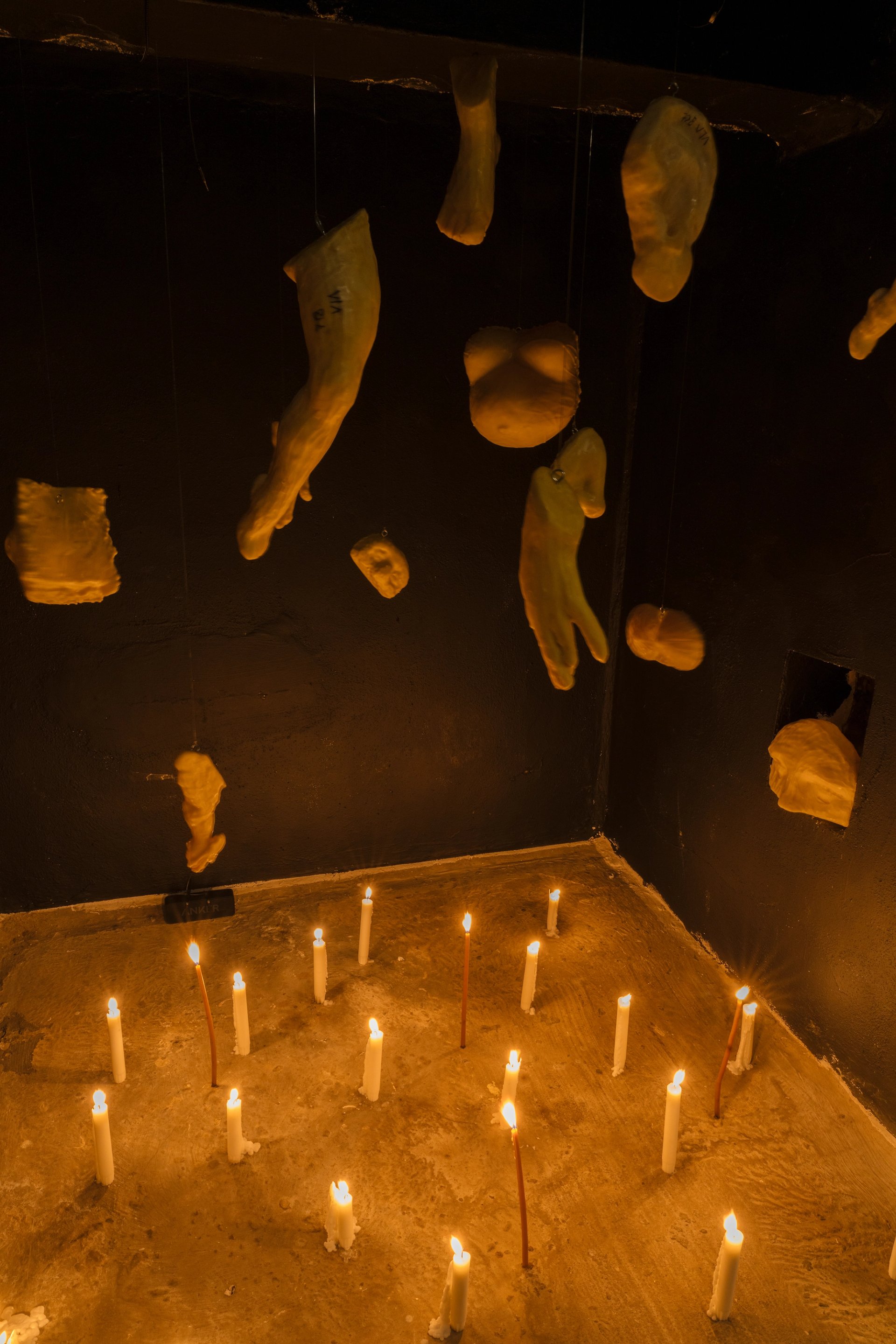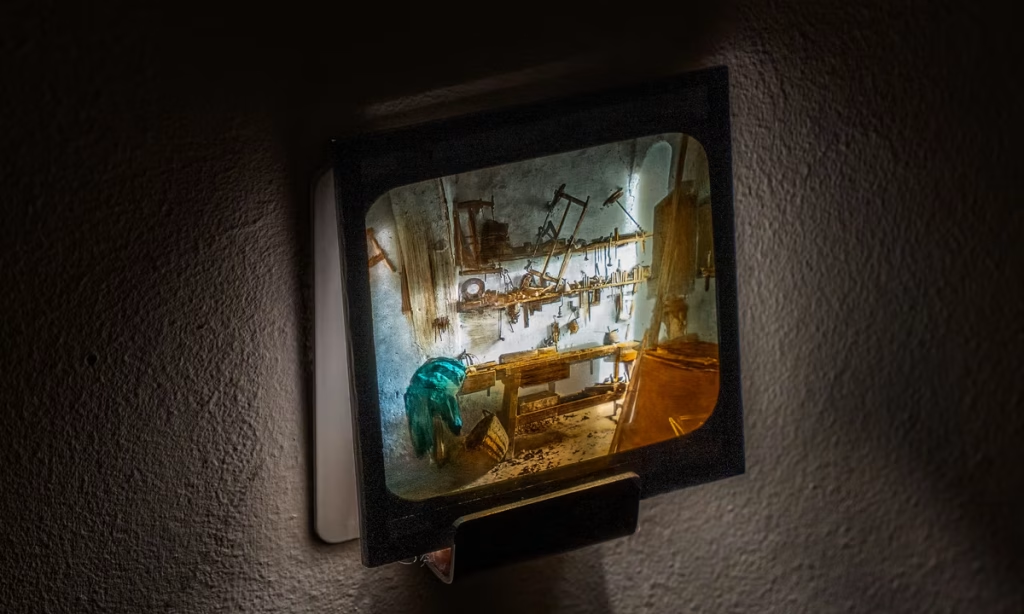You will find the Holy Land depicted with breathtaking subtlety on the walls of churches and galleries across Europe. But Jerusalem and Bethlehem, in the Western imagination, tend to look more like Italy’s Urbino or Siena, than Middle Eastern towns occupied for 2,000 years by a melting pot of communities, including Palestinian Christians. Now spread across the Israeli and Palestinian territories, the Holy Land, sacred to Judaism, Islam and Christianity, has exercised generations of artists and ideologues, who have made and remade it in their own image.
However, for the Palestinian artist Dima Srouji, The Holy Land is simply home—the site of childhood memories, “both good and bad”, she says. Her show, A Cosmogram of Holy Views, which opens today at London’s Ab Anbar Gallery, is the product of a decade’s worth of research into the built heritage of Palestinian Christians, and a lifetime’s experience of life under Israeli occupation.
It has at its heart what the artist describes as “the cognitive dissonance” between the way the outside world views her home and “the reality on the ground”, which she has represented here with quiet directness. In works of great visual power, she juxtaposes the myth with the reality. Making virtuosic use of multiple media—90s polaroids and Renaissance praedellas, as well as blown glass, carved stone and moulded wax objects that were hand-made in Palestine—she flirts constantly with a dark, surreal comedy.
In a series of tinted glass collages, European paintings are overlaid with scenes of modern life in Palestine. In Return to Nazareth, grandiose frescos of the Holy Family’s homecoming after Herod’s massacre of the innocents form the backdrop for an image from Srouji’s own childhood in the city. The artist’s infant skin is seen turning purple due to lack of air, at a time, during the First Gulf War, when few Palestinian children were issued with gas masks.
Dima Srouji, A Cosmogram of Holy Views, 2025. Installation view, Ab-Anbar Gallery, London
Photo: Sergey Novikov. Image courtesy of the artist and Ab-Anbar Gallery
Other works draw on Srouji’s careful documentation of Palestinian heritage—stone quarries, mother-of-pearl makers, and unbuilt churches—a heritage which she describes as little-studied. Today, following years of war in Gaza, and amid the as yet untested ceasefire between Israel and Hamas, that heritage remains at risk.
Though there are still thriving craft industries across Palestine’s West Bank, the practice of Palestinian artisans has been changed by decades of violence and occupation. Traditionally, they would use mother of pearl, brought from the Red or Dead Seas, to make reliquaries for churches around the world.
In A Cosmogram, Srouji has used the same mother of pearl techniques to make a model of her grandparents’ “completely ordinary” house in Nazareth. Her grandmother, twice displaced by conflict, evidently tended the house with great care, but today Srouji describes Nazareth as “an unliveable city”. “No-one will ever live in that house again,” she says.
“I am playing with what is sacred,” she explains, pointing to a series of reimagined stone-cut shrines, studded with luminous roundels of stained glass. The objects have been left notably, hauntingly empty, because, for Srouji, “what’s sacred is the shrine itself—and anyway all the relics have been looted or destroyed”.
In some of the exhibition’s most compelling works, we are invited to ponder what can be considered holy amid the horror in Gaza, where the gradual withdrawal of Israeli Defence Forces is currently revealing still more destruction. Feeling powerless in the face of the slaughter of her friends and relatives, Srouji has spent time in her studio carving, by hand, wax models of human forms.

Dima Srouji, Phantom Votives, 2025. Beeswax, candles, sound by Dirar Kalash
Image courtesy of the artist and Ab-Anbar Gallery
The works are a twist on the long tradition of votive offerings in churches, but, here, “it’s my own votive to the people of Gaza”, she says. Reproduced in 3D using photogrammetry software, some are based on parts of her own body, but others are the dismembered limbs of children who have been killed by Israeli forces. According to Palestinian health authorities, as of October 7 this year, the number of children killed had reached 20,179—30% of the total 67,173 deaths recorded since the same date in 2023.
“It’s the only thing that has kept me sane these last months during the genocide,” Srouji says. Without flinching, she adds: “The wax feels like skin—there’s something warm about it.”
It is perhaps the curse of the Palestinian artist today to co-exist so closely with death, but Srouiji’s work is a positive statement of her community’s long existence and heritage. “It’s much more about Palestinian life than about Palestinian death,” she says.
Underpinned by in-depth academic research into myriad strands of Palestinian culture, A Cosmogram of Holy Views provokes us to interrogate dynamic and ambivalent relationships between myth and history, art and reality, the living and the dead. “I want to push our presence so we are not erased,” says Srouji. “I want to haunt people.”
- A Cosmogram of Holy Views is at Ab Anbar Gallery, London, until 29 November
